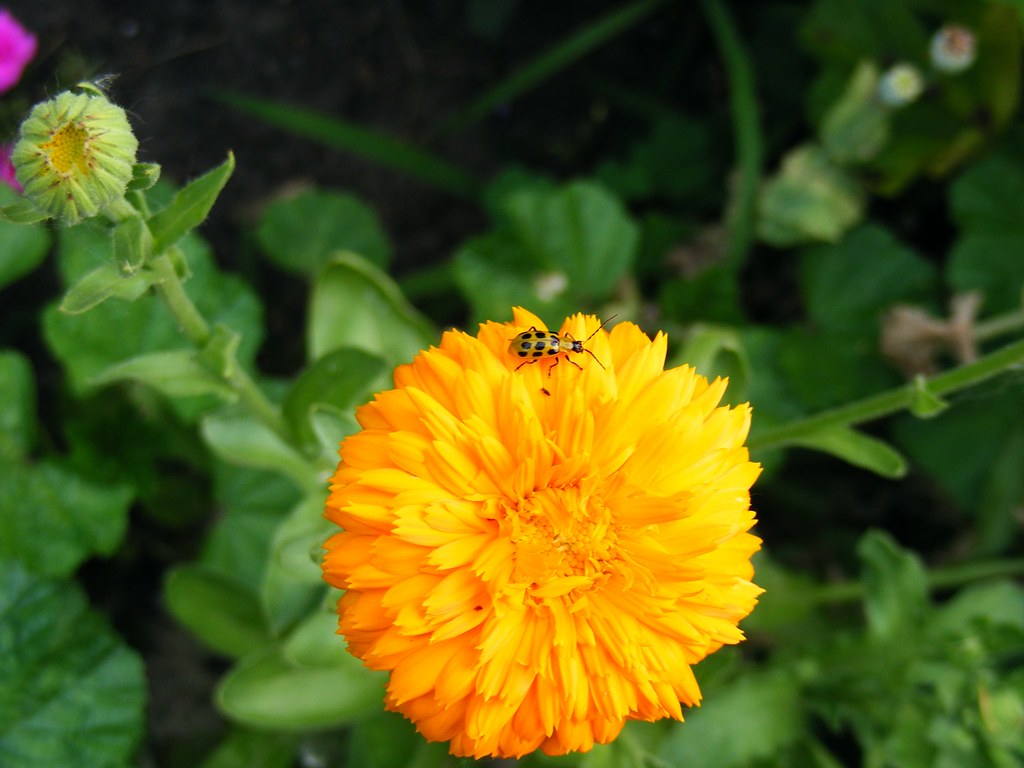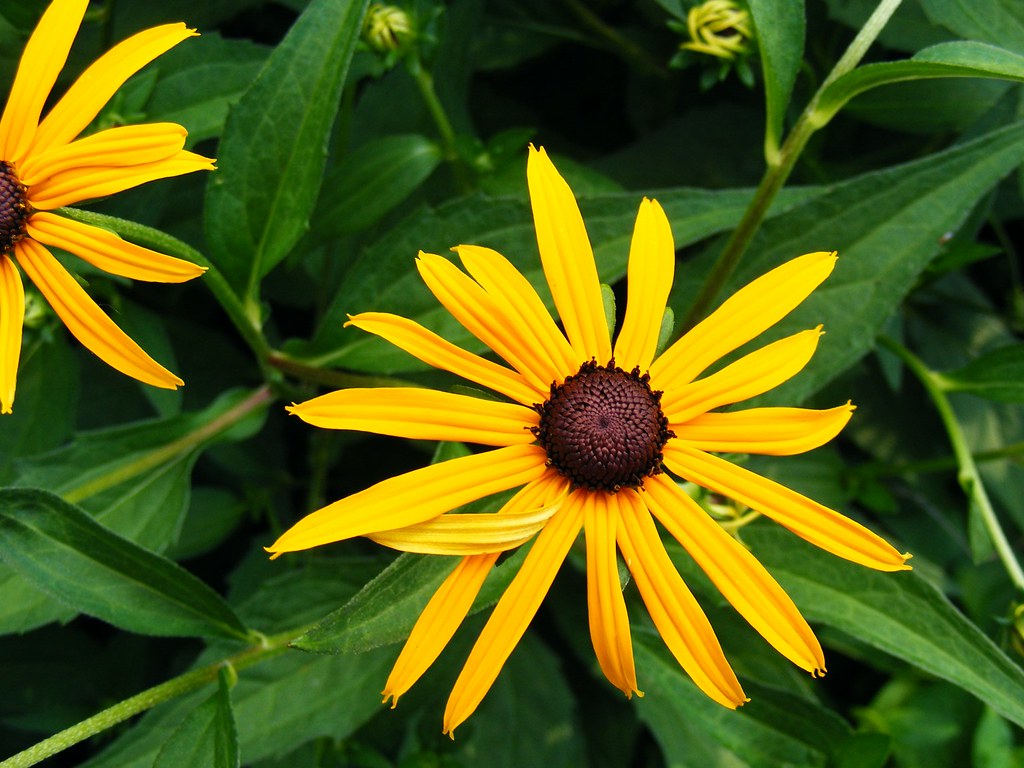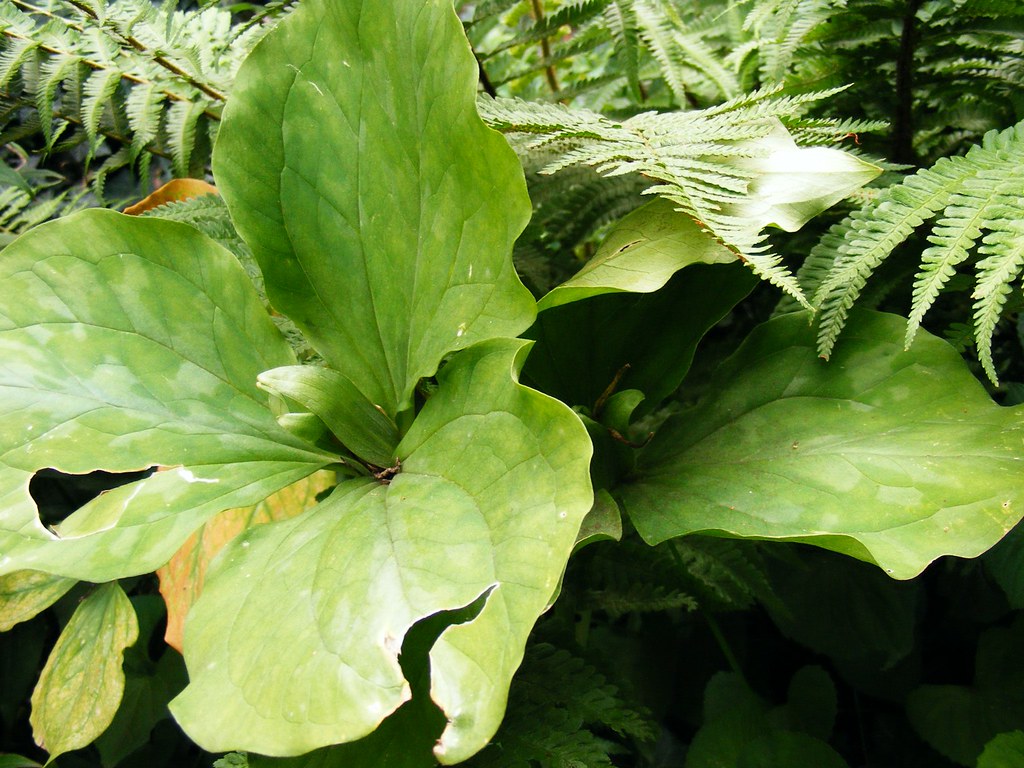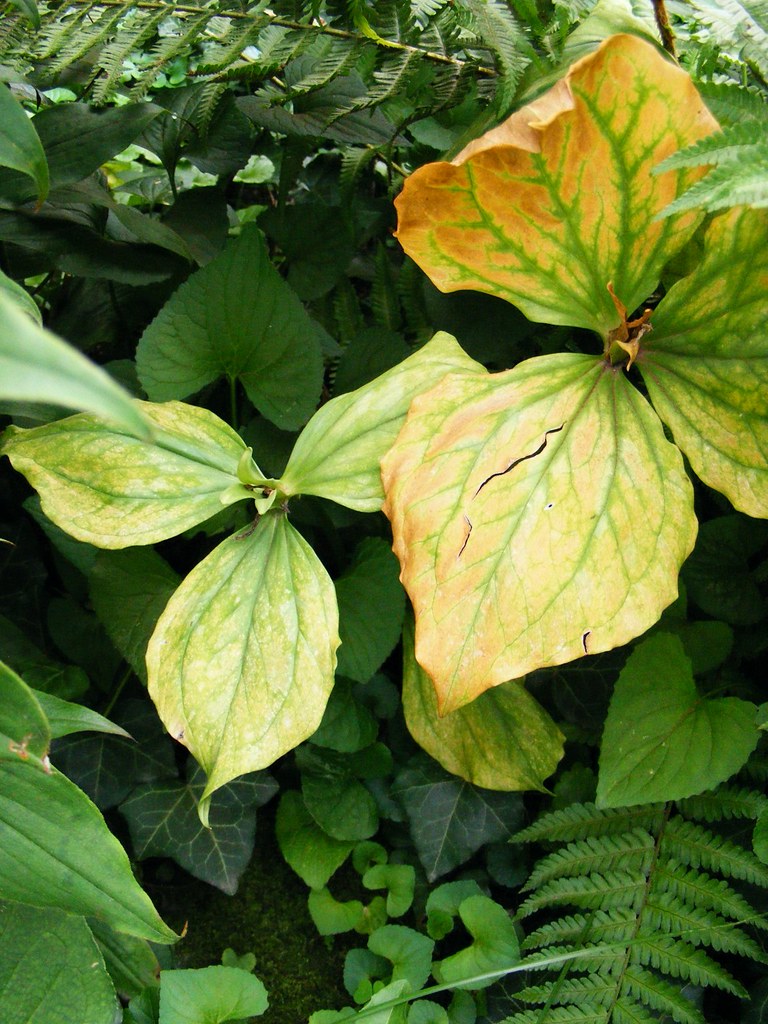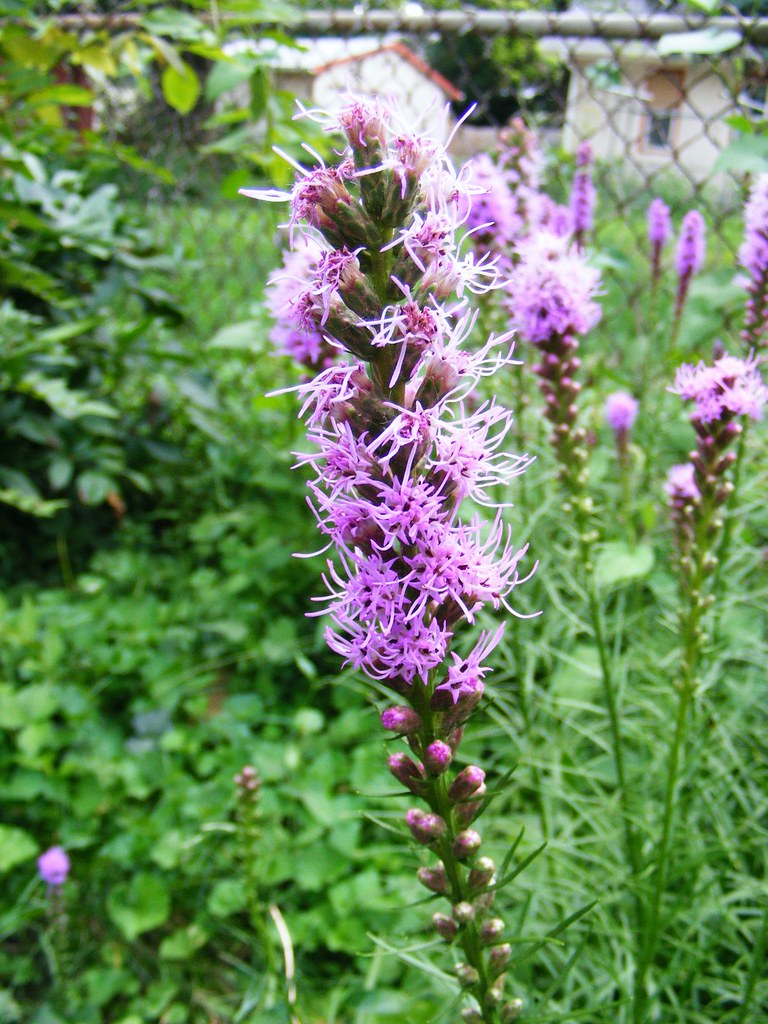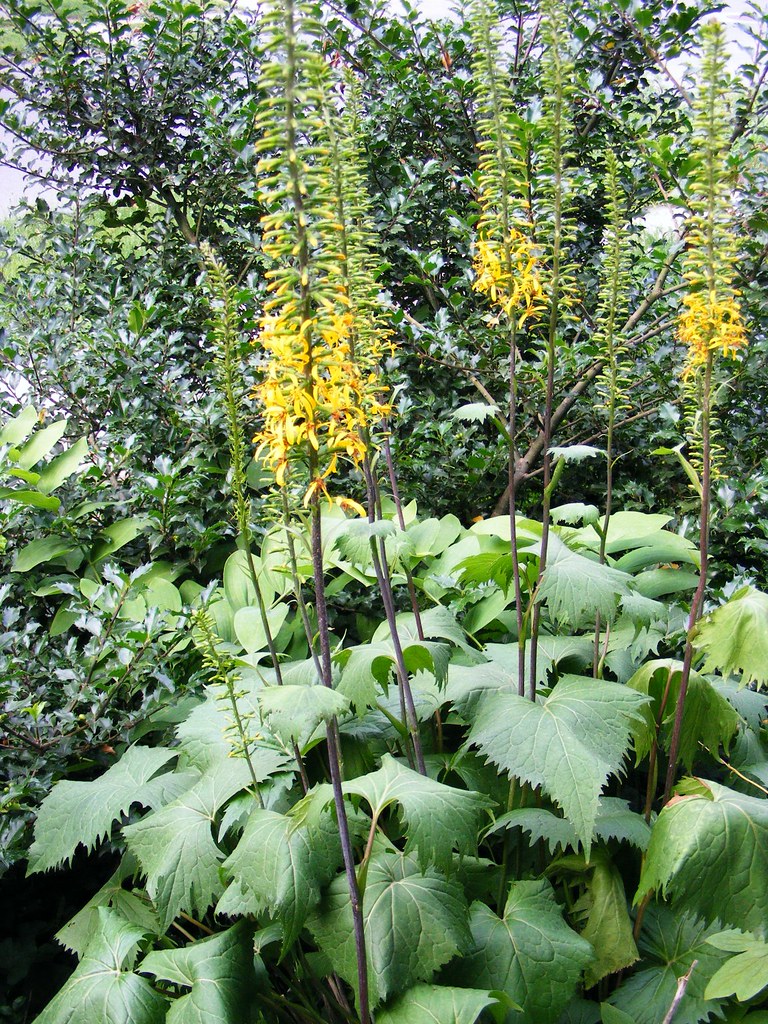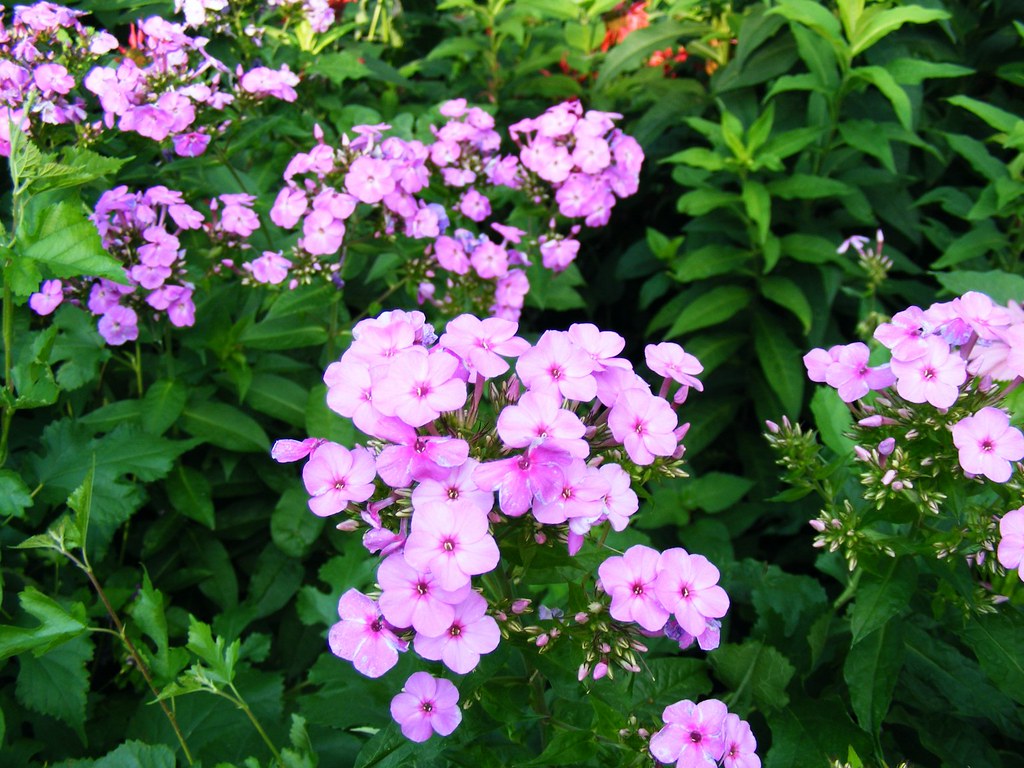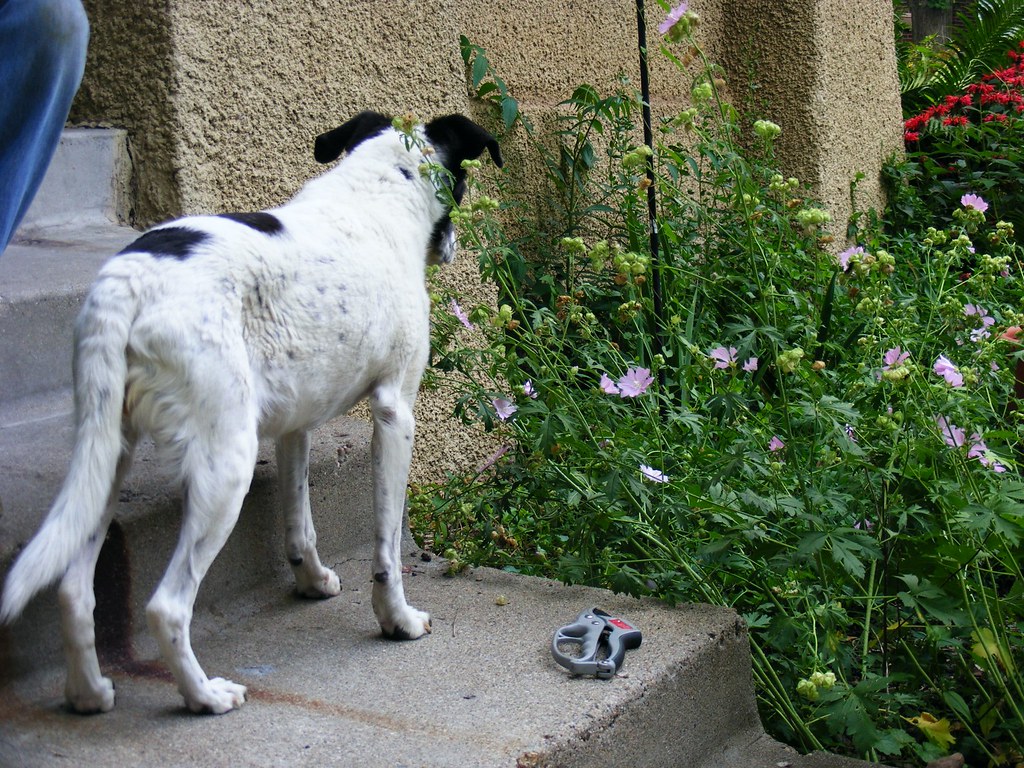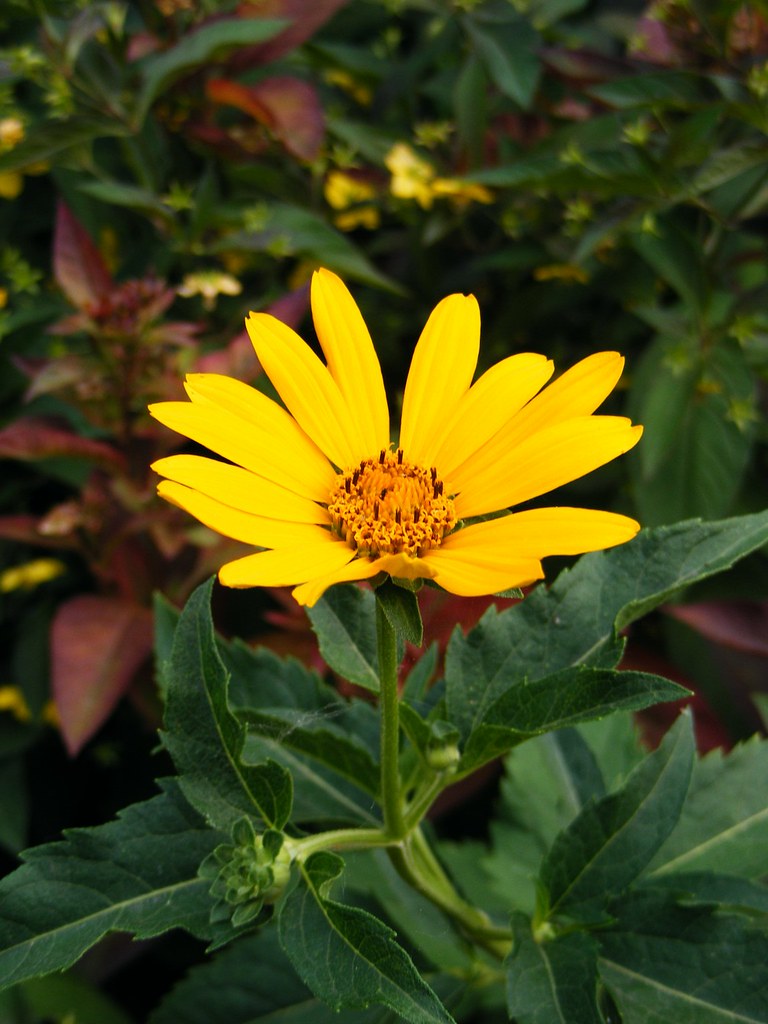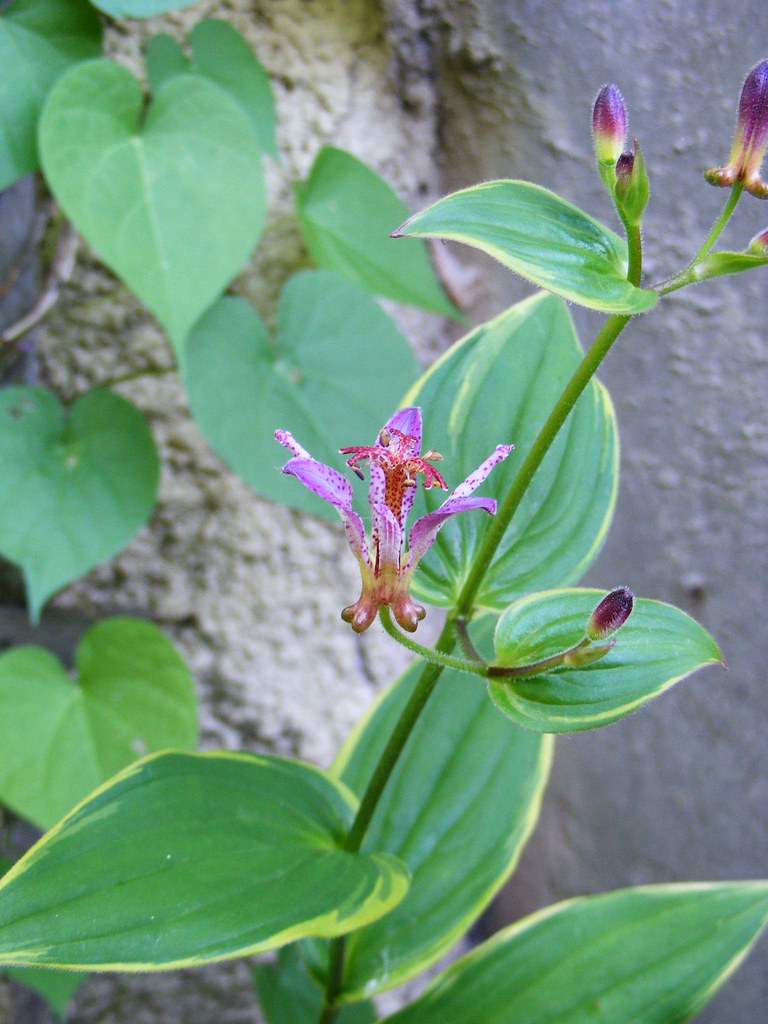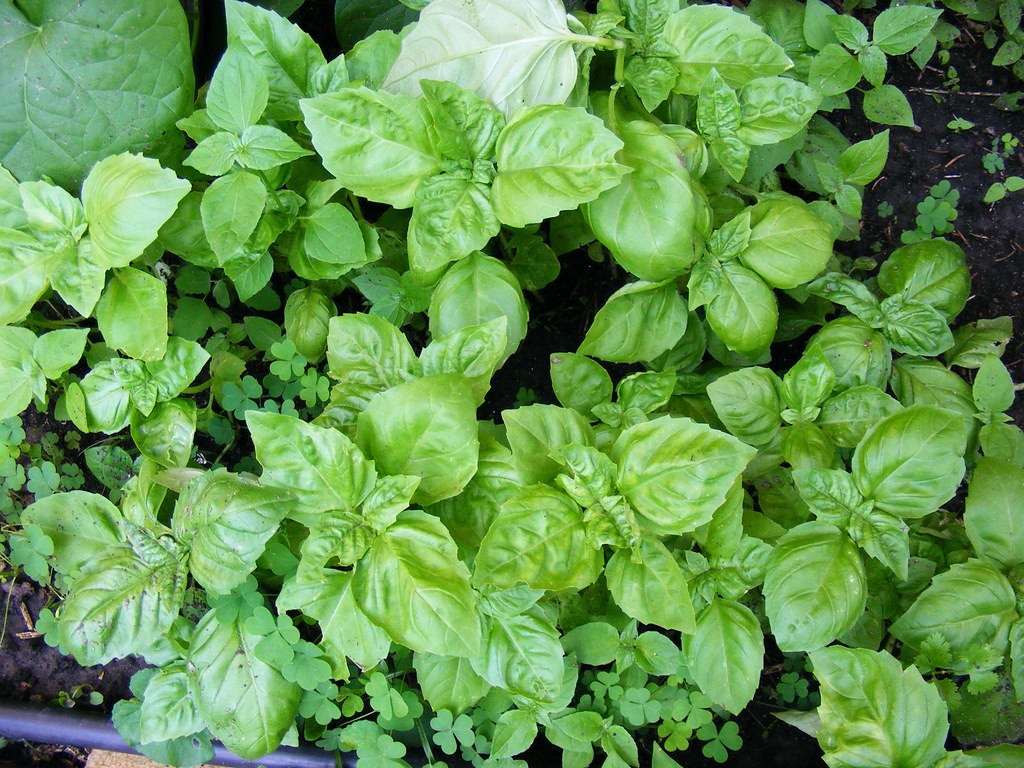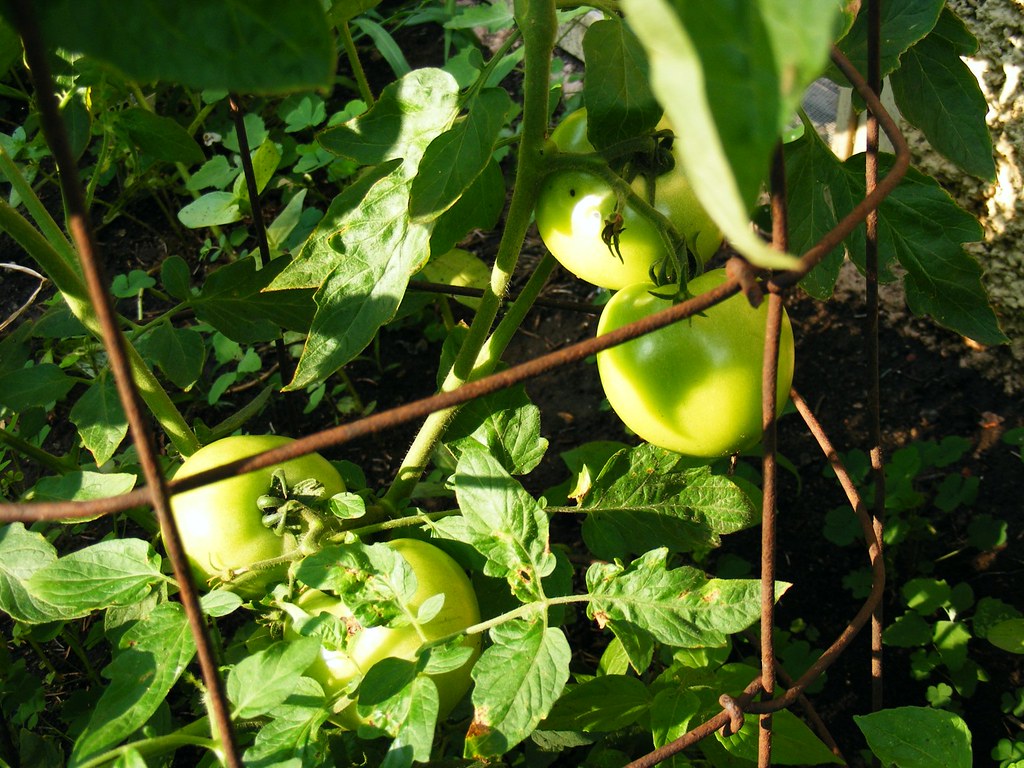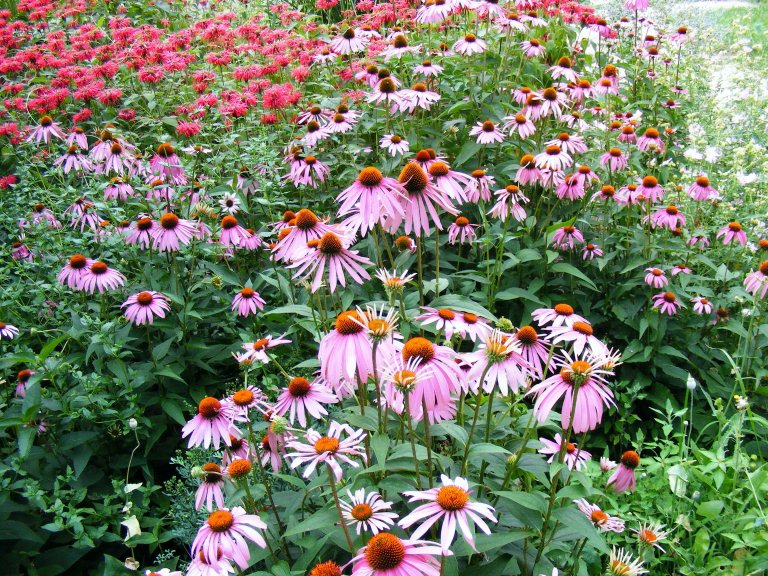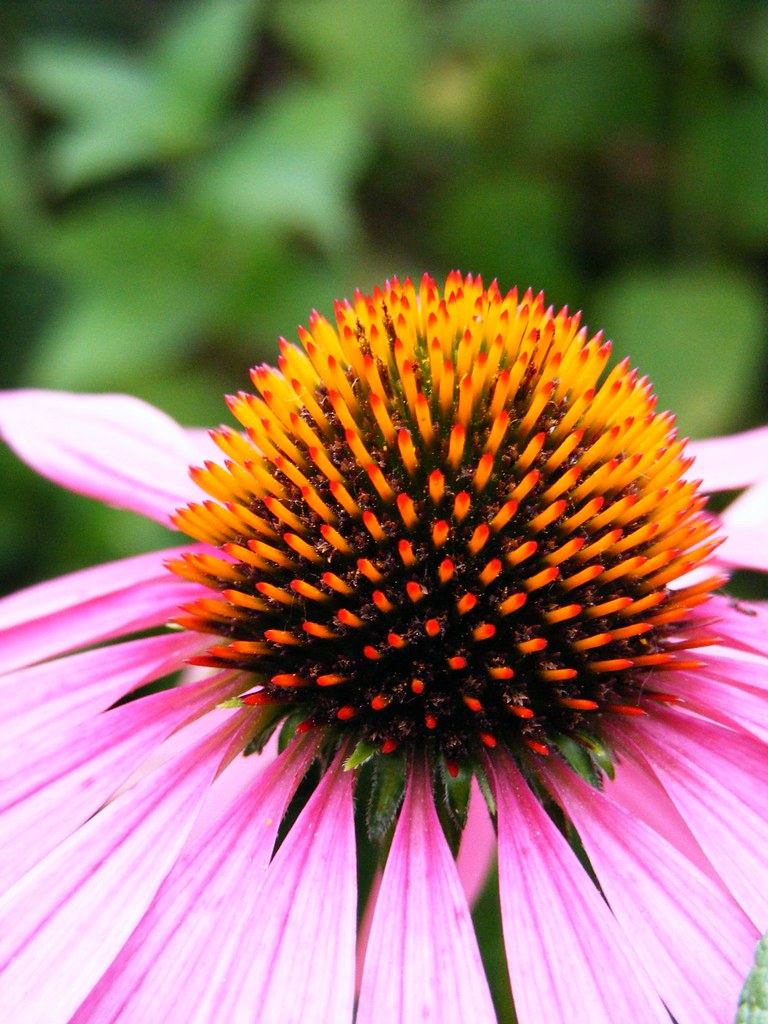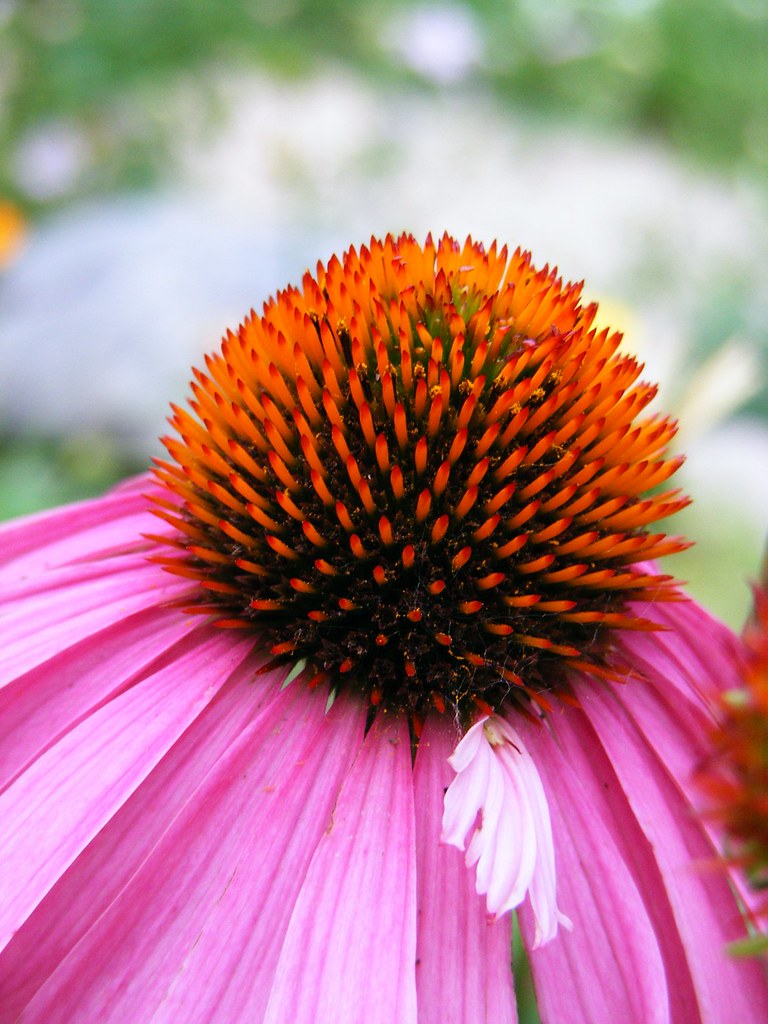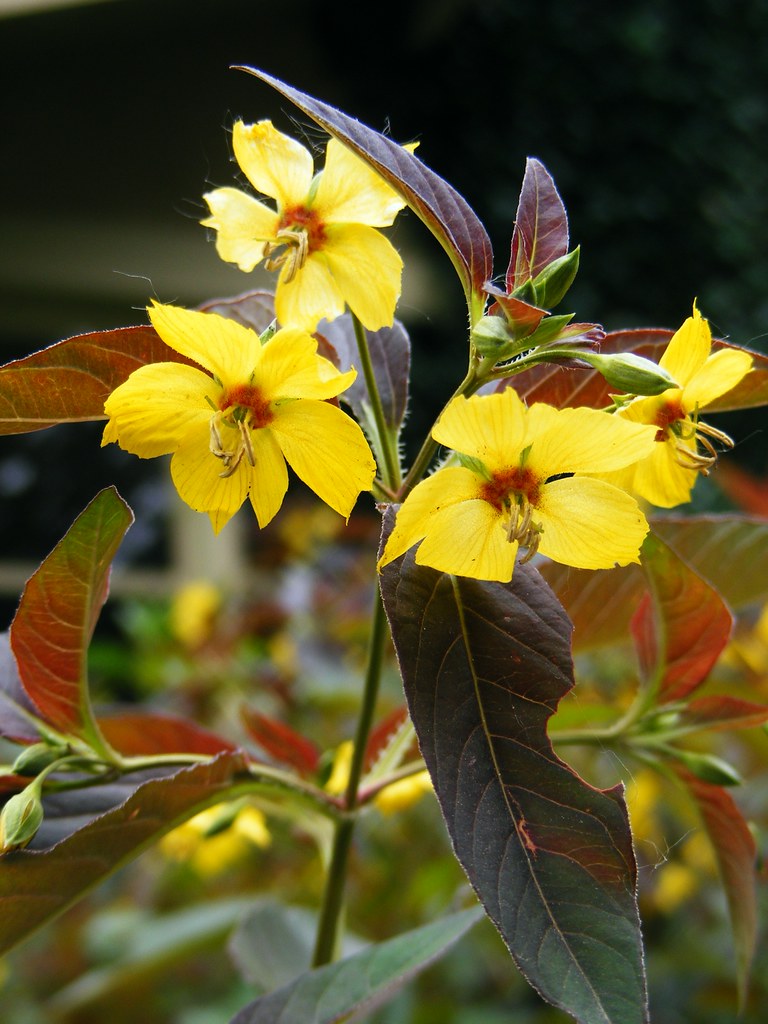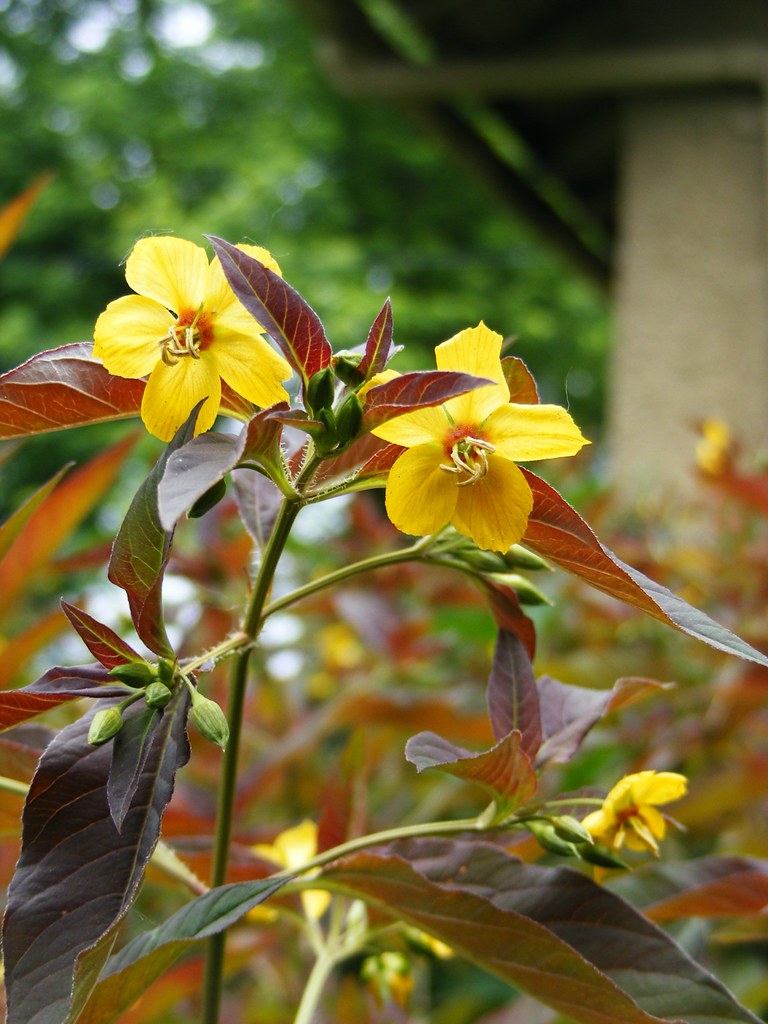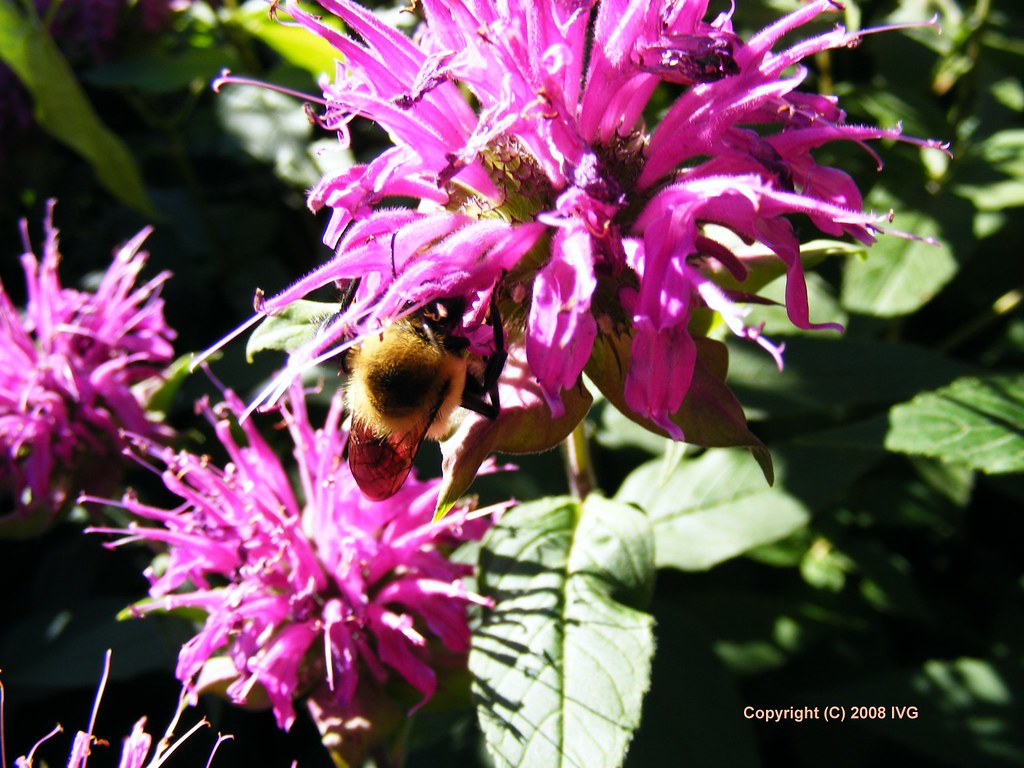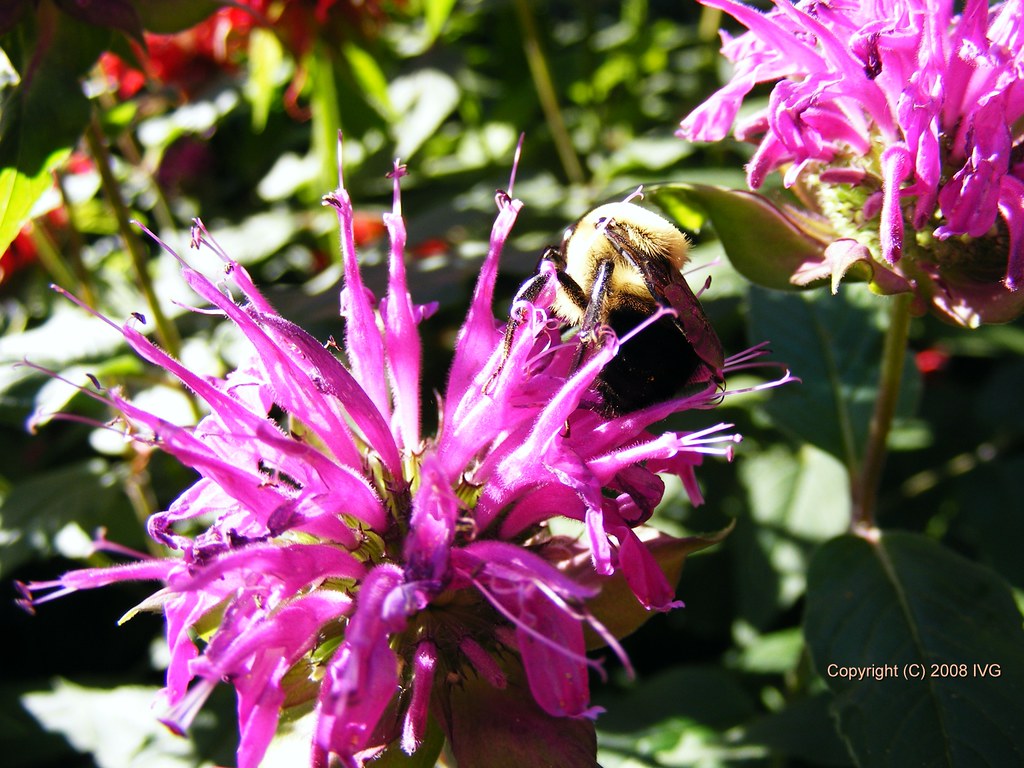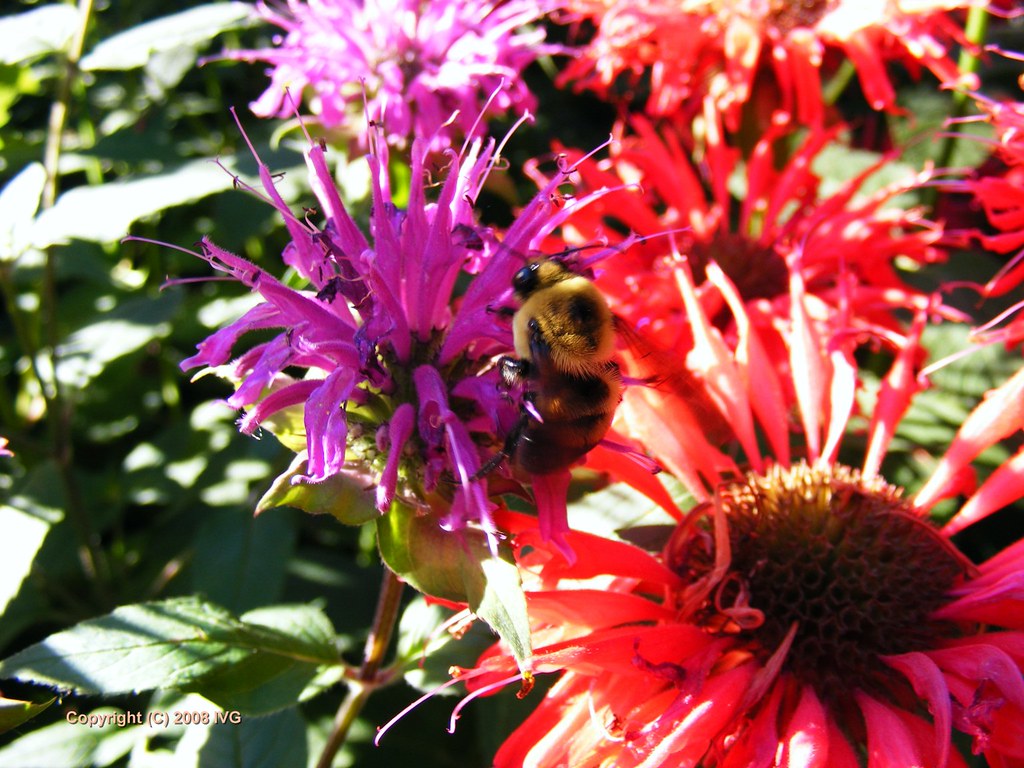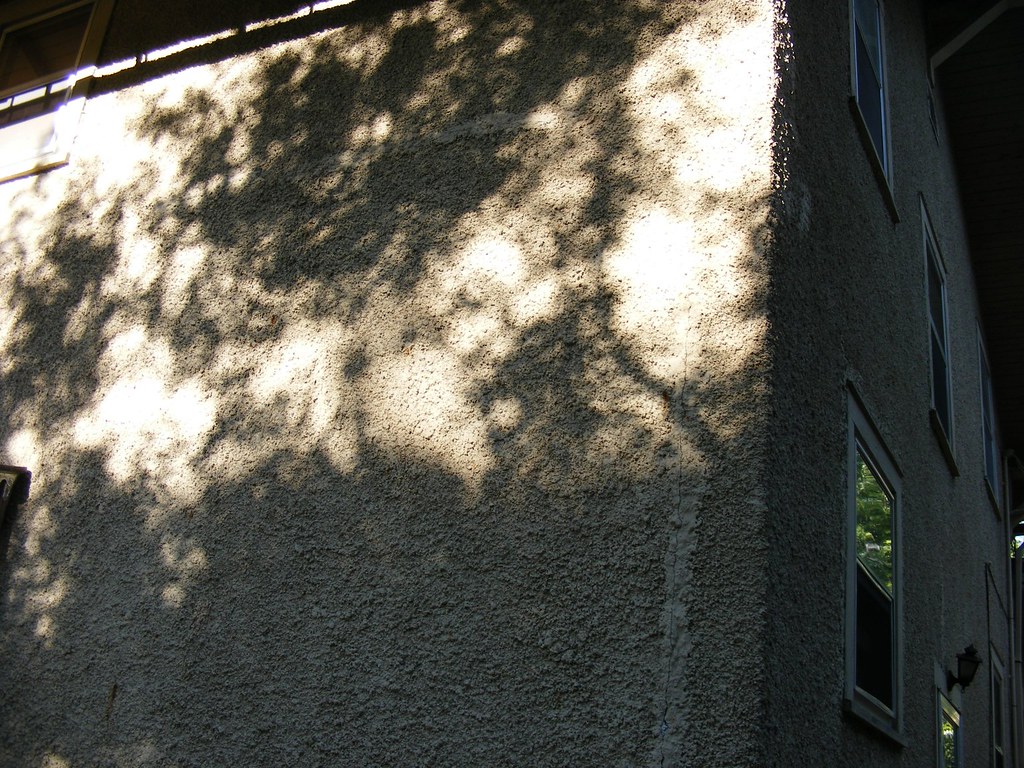 I took these shots a while back (July 13, I think?) one weekend afternoon while taking a break from weeding ... on one of the last few really wonderful recent summer days in the garden with low humidity, mild temperatures and comforting breezes. Since then, however, we have lapsed into a high dew point, high temperature, thunderstorm pattern recently ... So progress in the garden has suffered as we can't spend much time outdoors of late (or when we have the time together, it's raining!). This weekend promises to be brutal as well, but we'll just have to limit the time we're actively working on stuff. Major weeding of course and just 4 more perennials to get in, so we should be able to handle that! (Or I will, lol.)
I took these shots a while back (July 13, I think?) one weekend afternoon while taking a break from weeding ... on one of the last few really wonderful recent summer days in the garden with low humidity, mild temperatures and comforting breezes. Since then, however, we have lapsed into a high dew point, high temperature, thunderstorm pattern recently ... So progress in the garden has suffered as we can't spend much time outdoors of late (or when we have the time together, it's raining!). This weekend promises to be brutal as well, but we'll just have to limit the time we're actively working on stuff. Major weeding of course and just 4 more perennials to get in, so we should be able to handle that! (Or I will, lol.)Anyway ... I was enjoying the play of the shadows from the maple on the back of the house, so I did a series of them (I should have experimented with the video ... next time), just to see what they would look like. I ended up liking this one the best, so there it is ... I think that finding things in clouds, rocks and other everyday phenomena really leads one to look differently, see differently, and these shadows of the maple swaying in the breeze provide just such an opportunity. To be honest, I tend to focus more on the 'negative spaces' between the shadow and light than the shadows themselves, which I had hoped to be the primary subject. So, see what you will, and let me know ...
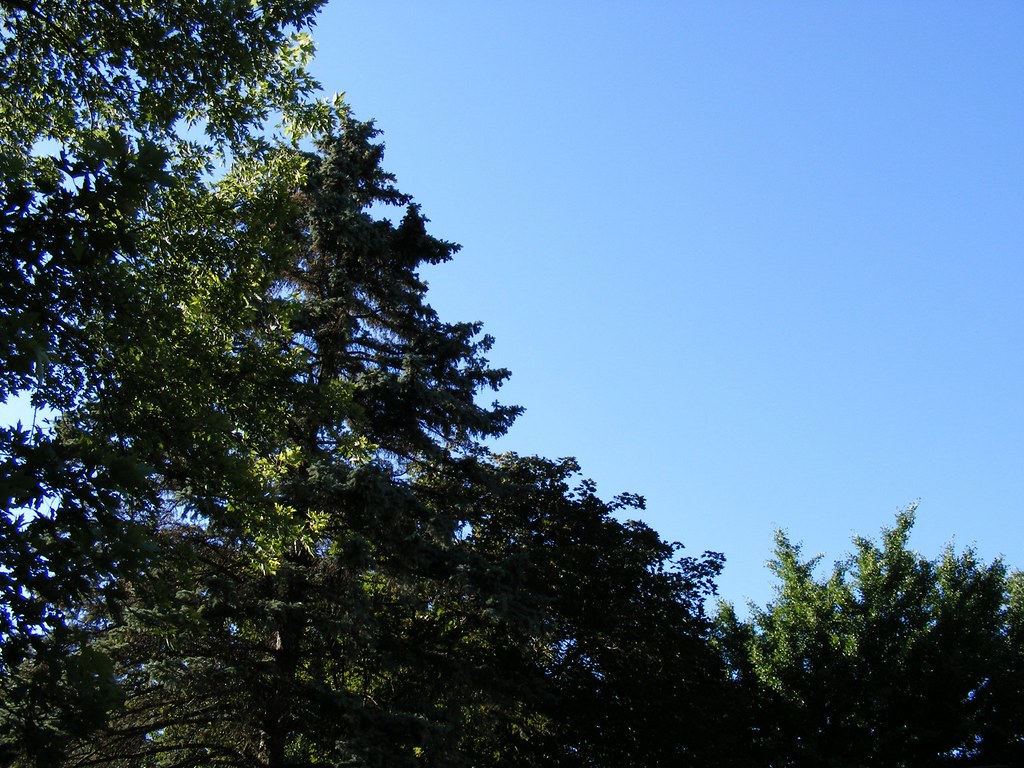 Though this is a familiar shot from our back yard, I just had to try to get the spectacular, cloudless blue of the day ... here you can see a bit of the big maple, the spruce and one of the gingkos, across the street. (Fortunately, they're both males ... whew!) We may be smack dab in the middle of the older city, but we have no dearth of trees, and we like it like that. No McMansions for us (we couldn't afford it anyway!), we like being in an old established neighborhood close to downtown, but far enough to be relatively quiet most of the time. We'll have been here 10 years come September, and we've decided to stay, of course. It's an ongoing project and collaboration in dirt, so to speak.
Though this is a familiar shot from our back yard, I just had to try to get the spectacular, cloudless blue of the day ... here you can see a bit of the big maple, the spruce and one of the gingkos, across the street. (Fortunately, they're both males ... whew!) We may be smack dab in the middle of the older city, but we have no dearth of trees, and we like it like that. No McMansions for us (we couldn't afford it anyway!), we like being in an old established neighborhood close to downtown, but far enough to be relatively quiet most of the time. We'll have been here 10 years come September, and we've decided to stay, of course. It's an ongoing project and collaboration in dirt, so to speak.Sometime I should post a couple of pages from my now defunct website that document how we have changed the overall look of the house from the front ... one of these days.

